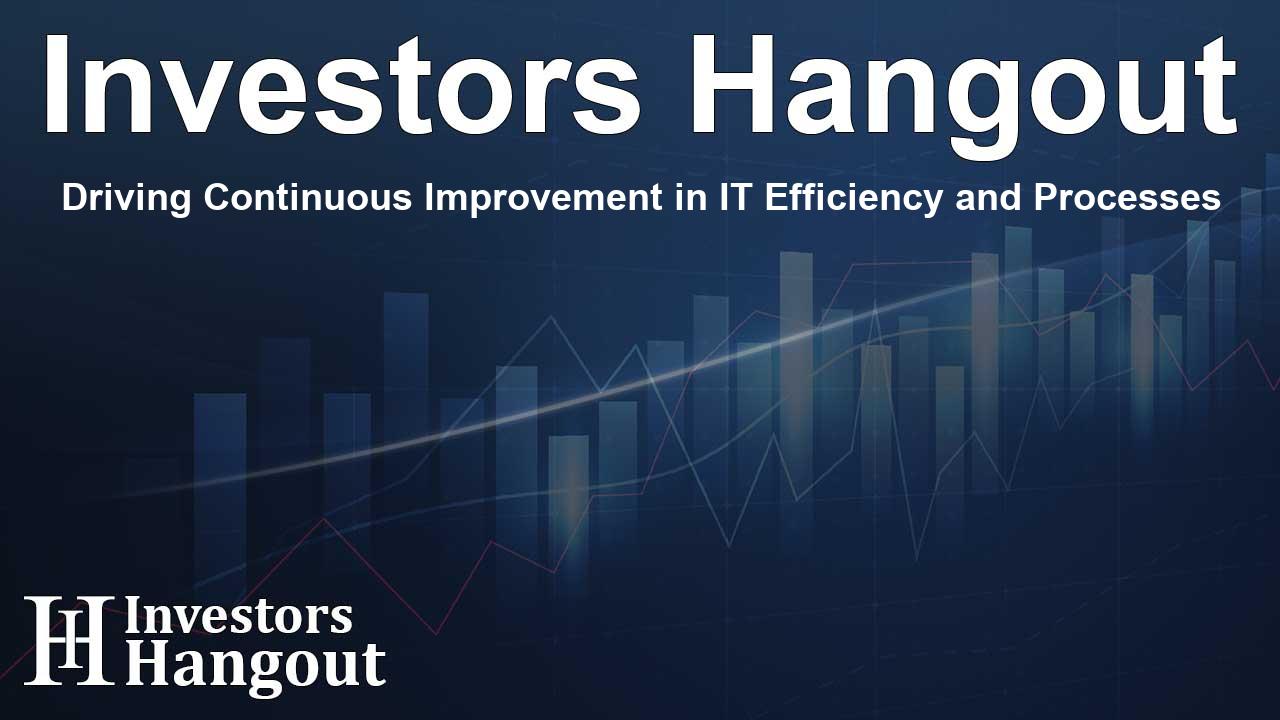Driving Continuous Improvement in IT Efficiency and Processes

Driving Continuous Improvement in IT Efficiency
New insights reveal powerful strategies for IT leaders focused on implementing ongoing improvements in processes. The emphasis shifts to continuous optimization rather than relying on one-time patches, enabling organizations to boost productivity, fuel innovation, and align their IT strategies with broader business objectives.
Navigating Challenges in IT Departments
As organizations strive to modernize through the integration of AI and digital technology, IT departments encounter increasing pressure and limited resources. The current environment presents numerous obstacles that affect productivity and thwart innovation. To address these issues, key findings have emerged that highlight the needs of IT teams and provide effective solutions.
The Importance of Process Improvement
It is essential for organizations to recognize that improving IT processes leads to widespread benefits. Enhanced efficiency accelerates innovation, leading to better customer experiences and strengthens overall organizational resilience. However, realizing these benefits requires a fundamental shift in perspective, viewing processes as enablers rather than constraints.
Combating Resource Constraints
Many CIOs and IT leaders are tasked with managing increased expectations amid dwindling resources. This often results in unsatisfactory outcomes, as teams struggle to maintain quality while input metrics become unclear or inconsistent. Addressing these limitations is critical for fostering a culture of continual improvement.
Innovative Framework for Lasting Change
Traditional approaches often emphasize tools and technologies, which can fall short in prompting sustainable change. Therefore, an innovative framework must be adopted that acknowledges human factors driving effectiveness. This includes addressing cultural resistance and understanding the need for continuous, iterative improvements that incorporate both tangible and intangible benefits.
Organizations must position process enhancement not as singular projects but as dynamic practices requiring regular evaluation and strategic adjustments. Such a balance is crucial for achieving desirable outcomes alongside clearer strategic direction for teams.
Three-Step Process for Enhancing IT Efficiency
In a new resource, a comprehensive three-step framework is outlined to help IT departments improve their processes:
- Identify and Select Your Processes: Start by aligning goals and gathering stakeholder input. Utilize data-driven diagnostics to focus efforts on high-impact areas and establish a clear priority list for productivity and efficiency improvements.
- Optimize Your Processes: Set specific objectives for improvement that align with business goals. Create detailed mappings of current processes to pinpoint inefficiencies and eliminate waste from workflows. Gathering feedback post-optimization ensures sustained advancements and fosters continuous adaptation.
- Implement, Monitor, and Sustain Your Improvements: With a defined plan and effective leadership, execute the optimized processes. Continuous monitoring and adapting to new challenges will maintain improvements and lead to long-term success.
Achieving Organizational Resilience
This forward-thinking approach equips IT leaders with the necessary tools to affect lasting change, emphasizing continuous enhancement and human processes. Optimized IT functions not only bolster efficiency but also support scalability, making organizations more adept at responding to cybersecurity challenges or technical failures.
Frequently Asked Questions
What is the main focus of the new insights shared by Info-Tech Research Group?
The insights stress the importance of continuous improvement in IT processes rather than one-time fixes to enhance productivity and innovation.
How can IT departments navigate resource constraints?
By recognizing the constraints and proactively working on process improvements, IT teams can better manage the demands faced with limited resources.
What is the significance of viewing processes as enablers?
Viewing processes as enablers helps organizations leverage their capabilities for strategic advantage, rather than seeing them as obstacles to efficiency.
What framework is recommended for process improvement?
A three-step framework is proposed which involves identifying key processes, optimizing them through clear goals, and sustaining improvements through ongoing monitoring.
Why is continuous improvement vital for IT organizations?
Continuous improvement promotes resilience, agility, and the ability to tackle emerging challenges effectively, ensuring that IT remains aligned with business goals.
About The Author
Contact Lucas Young privately here. Or send an email with ATTN: Lucas Young as the subject to contact@investorshangout.com.
About Investors Hangout
Investors Hangout is a leading online stock forum for financial discussion and learning, offering a wide range of free tools and resources. It draws in traders of all levels, who exchange market knowledge, investigate trading tactics, and keep an eye on industry developments in real time. Featuring financial articles, stock message boards, quotes, charts, company profiles, and live news updates. Through cooperative learning and a wealth of informational resources, it helps users from novices creating their first portfolios to experts honing their techniques. Join Investors Hangout today: https://investorshangout.com/
The content of this article is based on factual, publicly available information and does not represent legal, financial, or investment advice. Investors Hangout does not offer financial advice, and the author is not a licensed financial advisor. Consult a qualified advisor before making any financial or investment decisions based on this article. This article should not be considered advice to purchase, sell, or hold any securities or other investments. If any of the material provided here is inaccurate, please contact us for corrections.
